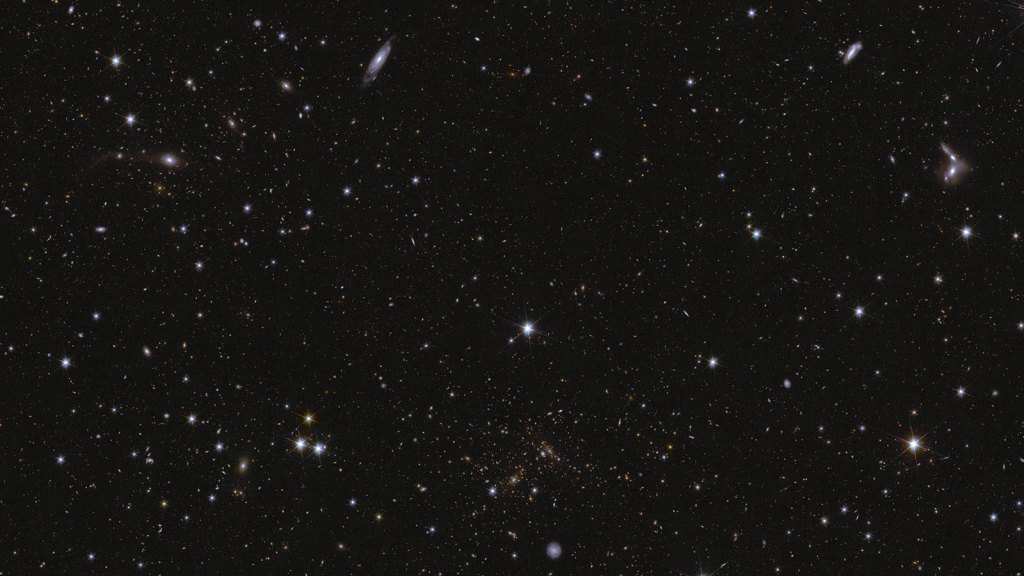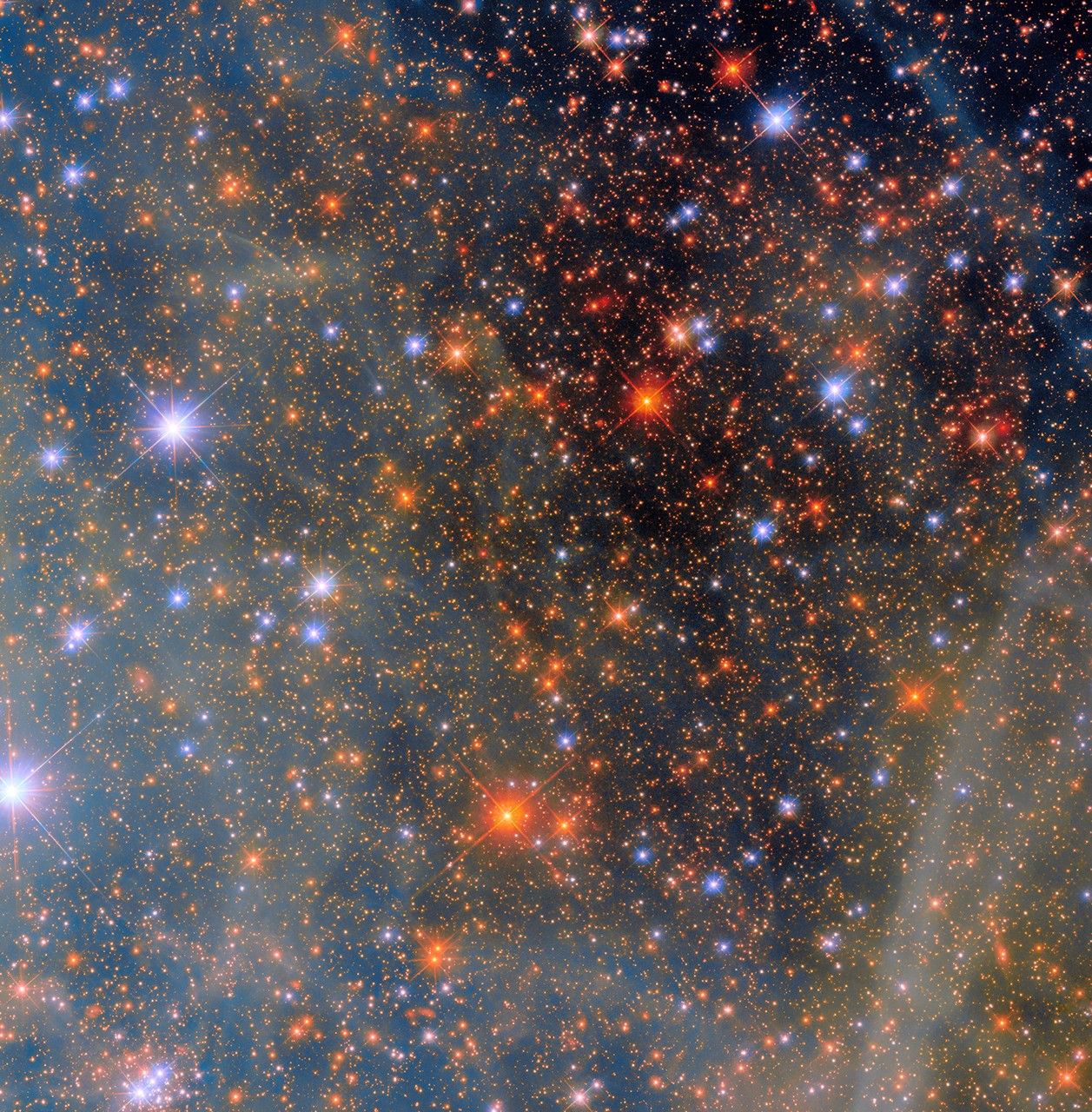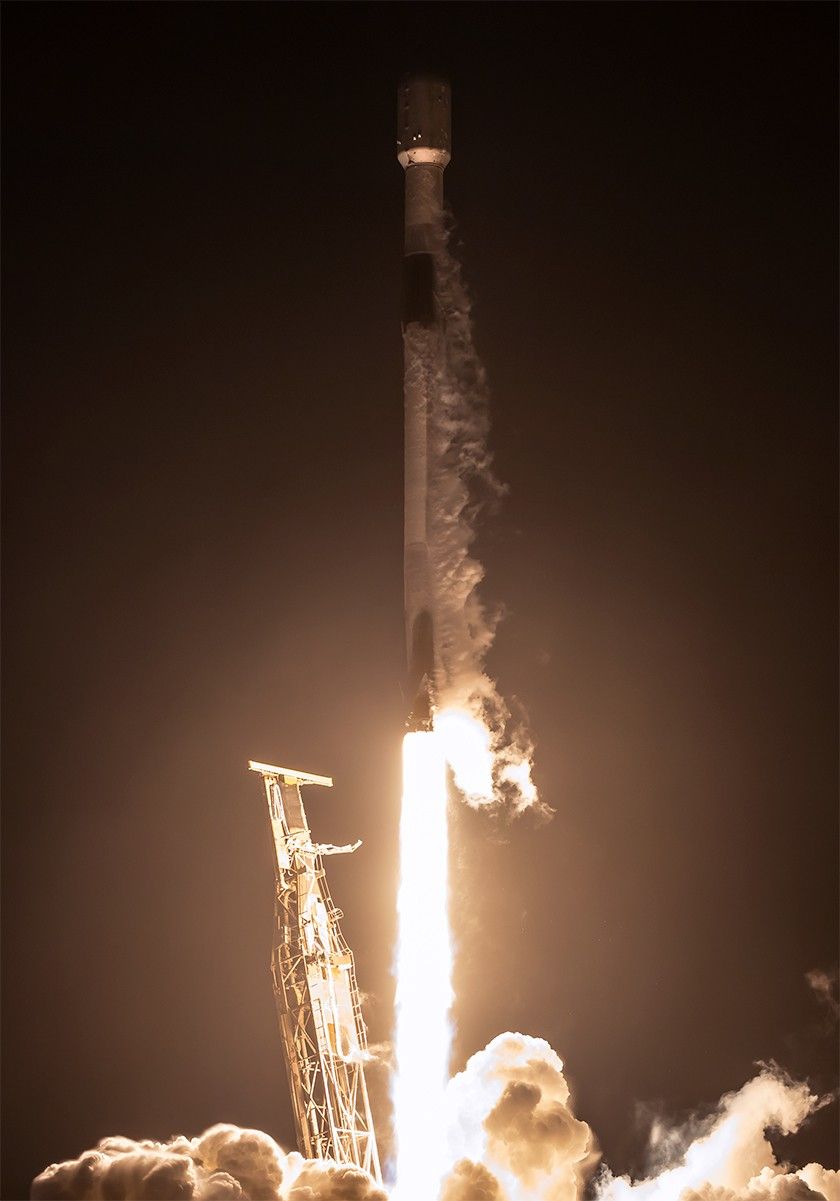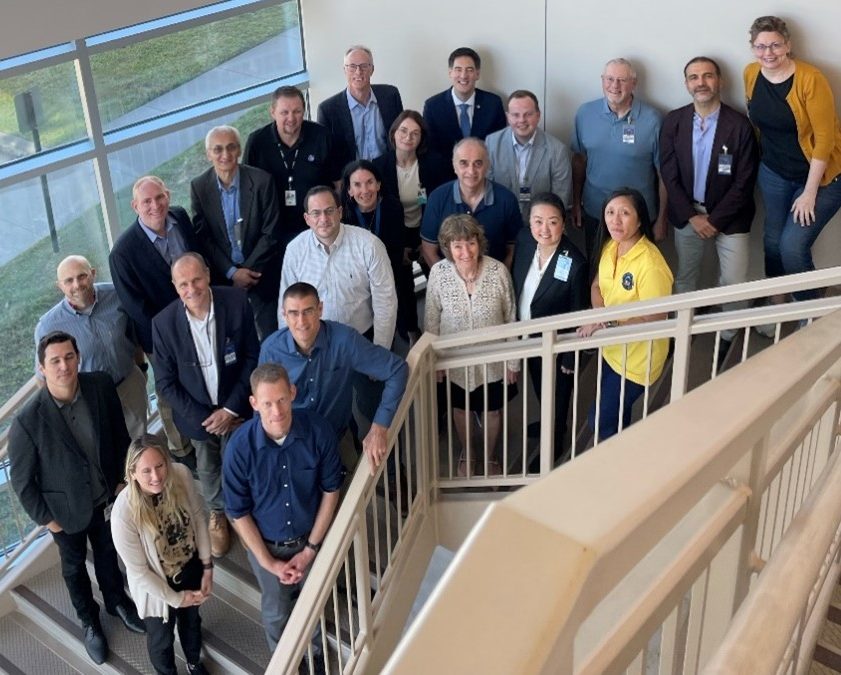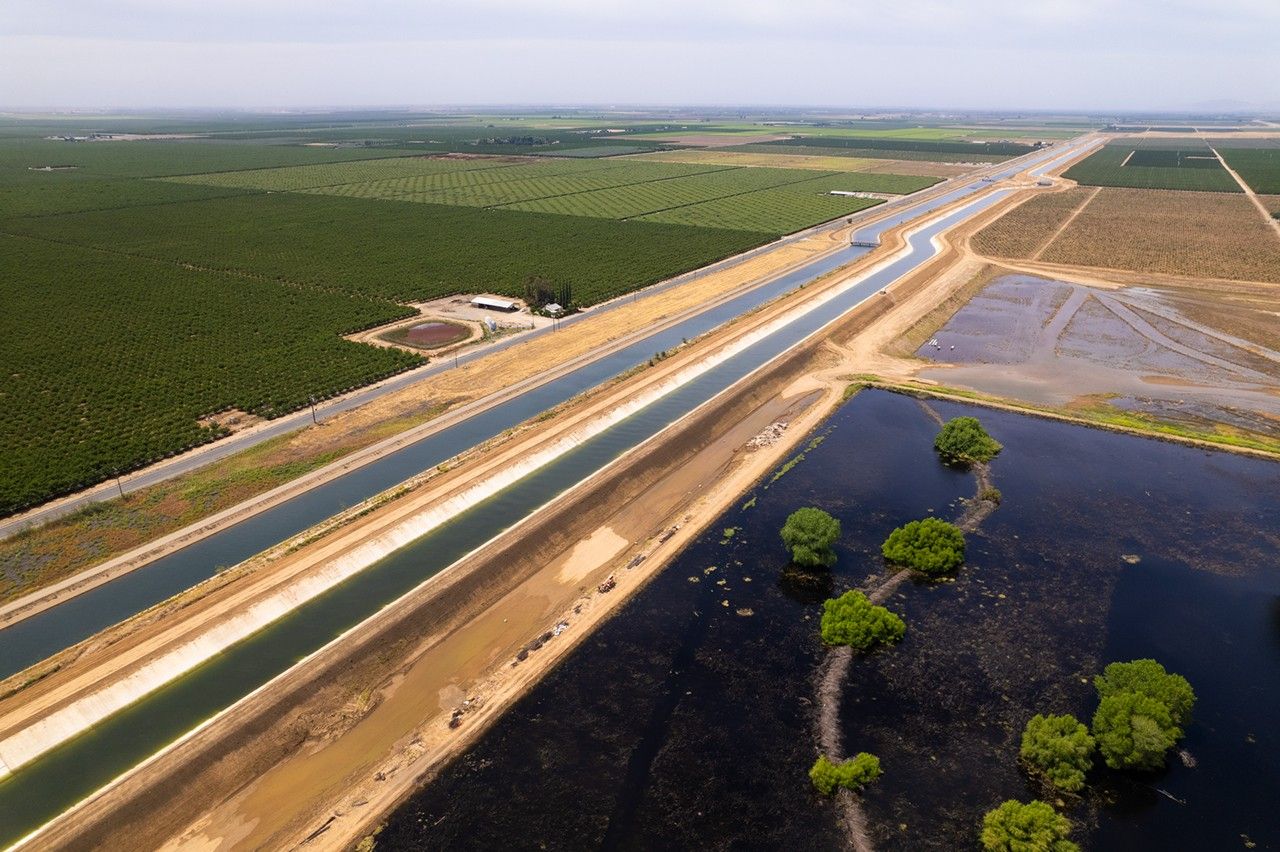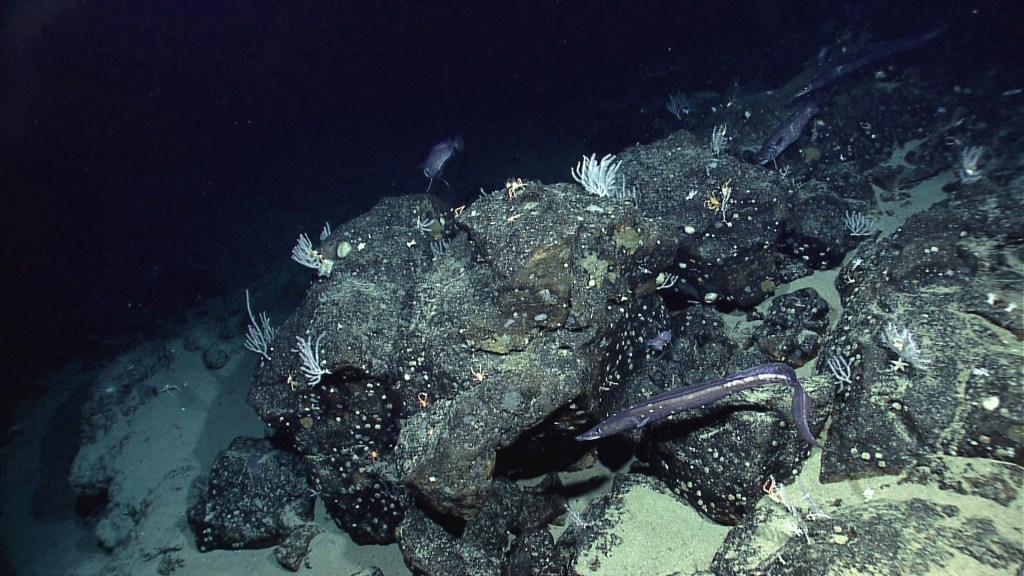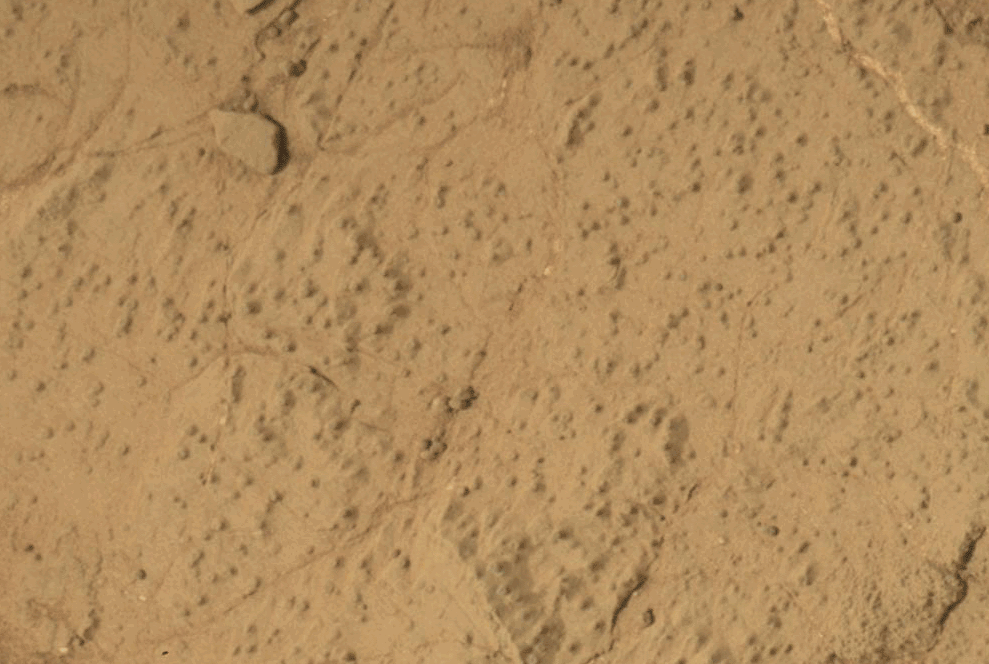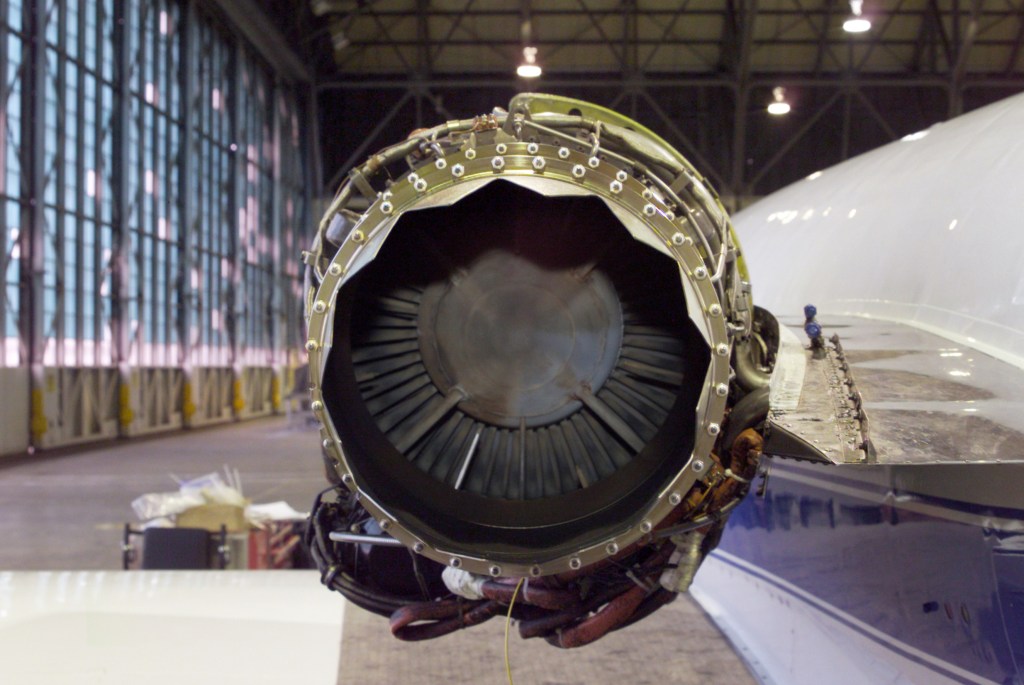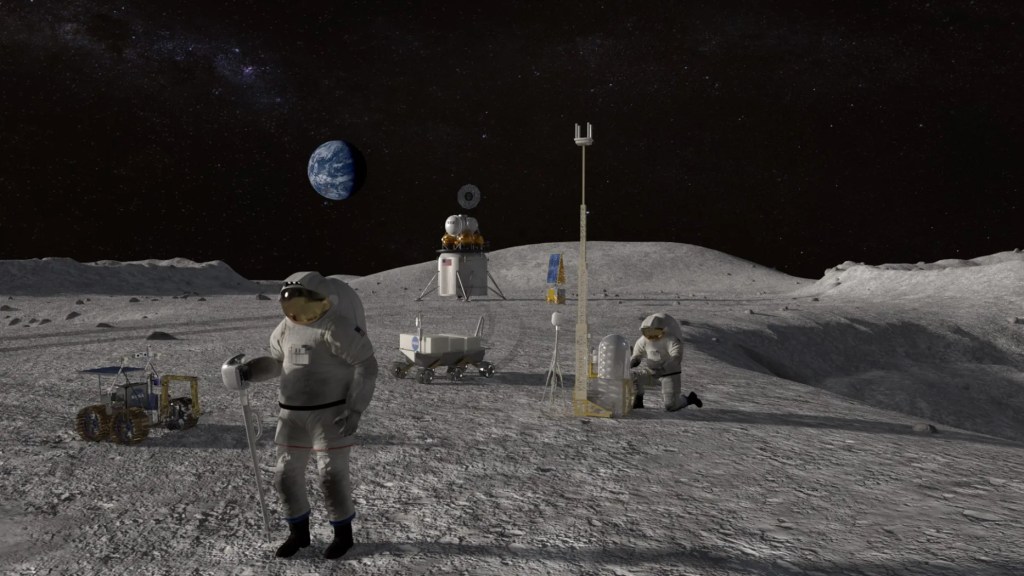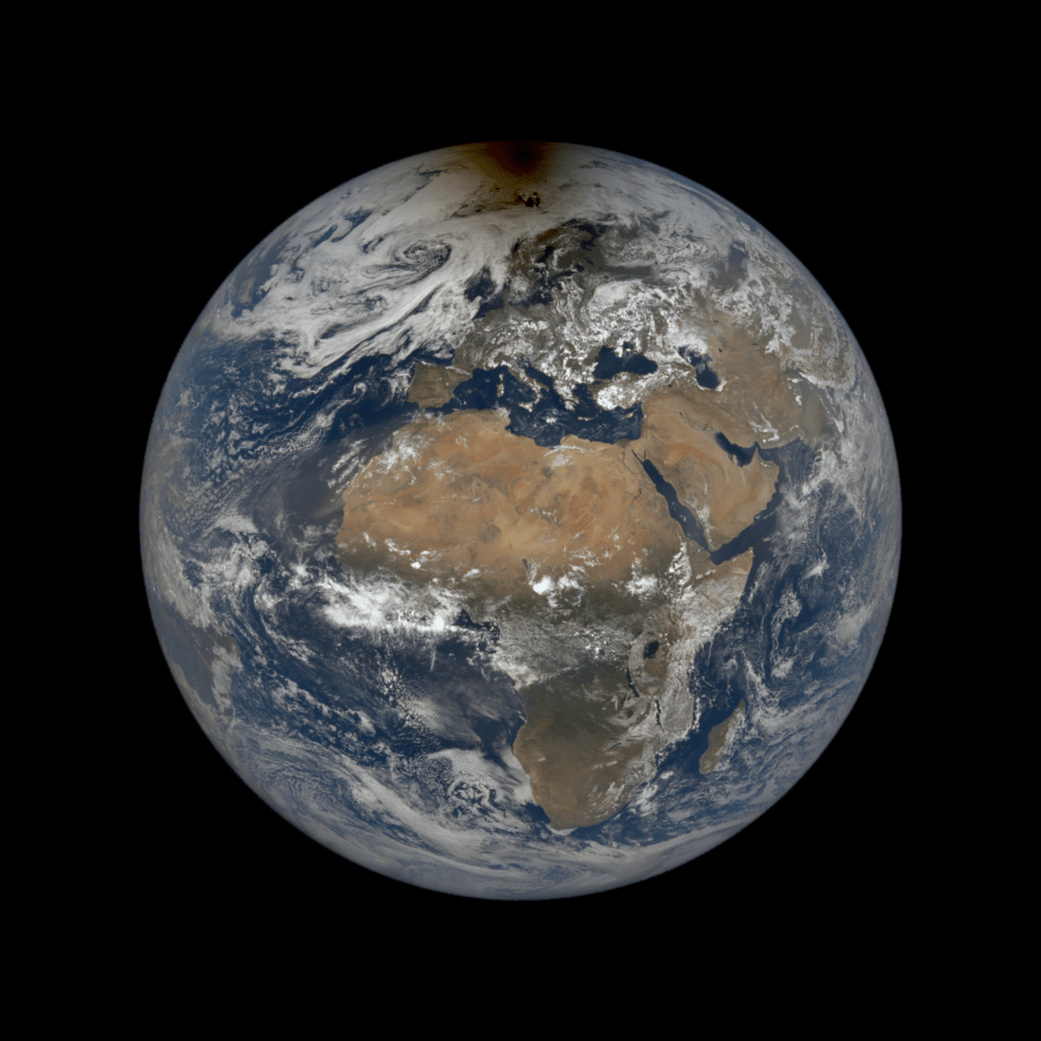No, that’s not a smudge on your screen, nor a photographer’s wayward thumb. In this image, taken June 10, 2021, the blurry dark brown spot over the Arctic is a shadow cast by our Moon during a solar eclipse.
This photograph was captured by NASA’s Earth Polychromatic Imaging Camera (EPIC), a camera and telescope which sits aboard NOAA’s Deep Space Climate Observatory Satellite (DSCOVR). DSCOVR orbits a point of gravitational balance between the Earth and Sun known as the L1 Lagrange point, nearly 1 million miles away from our planet.
EPIC provides high quality, color images of Earth, which are useful for monitoring factors like the planet’s vegetation, cloud height, and ozone. And every once in a while, it has the opportunity to capture a solar eclipse.
“Taking images of the sunlit half of Earth from a distance four times further than the Moon’s orbit never ceases to provide surprises, like occasionally the Moon getting in our field of view, or the Moon casting shadow on Earth,” said Dr. Adam Szabo, the NASA Project Scientist of DSCOVR.
A solar eclipse occurs when the Moon is positioned between the Sun and Earth, leading the Moon’s shadow to be projected onto Earth’s surface. During a total solar eclipse, the Moon completely blocks the Sun. During an annular solar eclipse, like the one on June 10, the Moon is near its farthest point from Earth and appears smaller than the Sun in the sky. As the two align, the Sun appears as a ring of fire surrounding the dark disk of the Moon.
On June 10, viewers in parts of Canada, Greenland, and Russia were treated to a full annular eclipse. People in a handful of other locations, including parts of the Caribbean, Asia, Europe, eastern United States, Alaska, and northern Africa, were able to catch a partial solar eclipse, where only part of the Sun is blocked by the Moon, leaving behind a crescent-shaped piece of Sun. EPIC didn’t have too bad a view, either.
You can find more photos and videos from EPIC, including a few lunar photobombs, here.
By <a href="mailto:Gold, Alison J. (GSFC-1300)[GSFC INTERNS] ?subject=EPIC%20Image”>Alison GoldNASA’s Goddard Space Flight Center, Greenbelt, Md.

